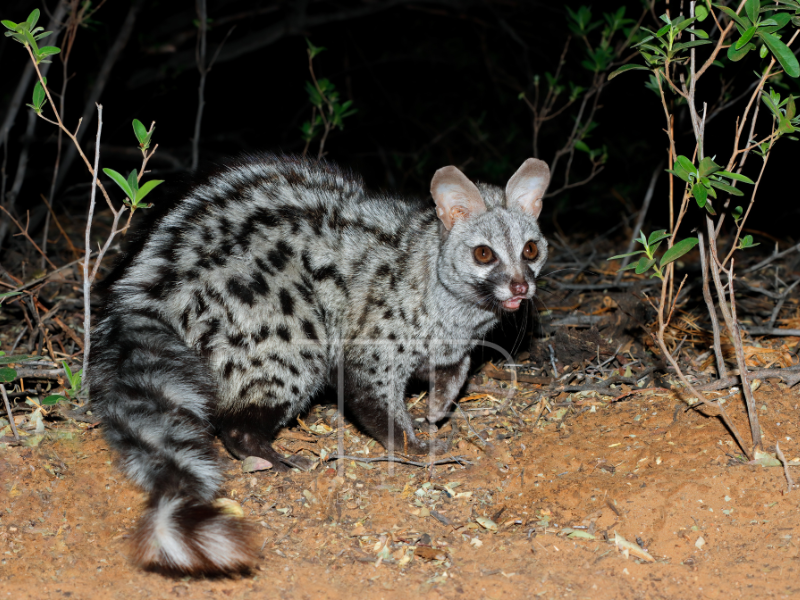It is the most abundant carnivorous mammal in Portugal, but it is never seen because it only comes out at night to hunt.
It can grow to be over a meter long, but it doesn’t weigh more than two kilos, as most of its length comes from a super fluffy tail. It looks like one, but it’s not a feline, much less a cat, but a carnivorous mammal that comes out at night to hunt. For this reason, it is considered very elusive and difficult to spot.
This agile predator has semi-retractable, short, thin claws and a long tail with eight to ten black rings, which allow it to climb trees very easily and give it great agility. The Genet’s presence in the municipality has been confirmed through records obtained by the Vita Nativa Association’s photo-trapping cameras, which help in the process of surveying the fauna and flora of Seixal’s Metropolitan Biodiversity Park.
The animal has gray fur with brown patterns, a pointed black snout and white spots under its eyes and on its lips. Its ears are large and wide and its body is elongated and slender, with males being slightly larger than females. The species can also live in captivity and can reach 18 years of age in this condition. In the wild, the average age of these predators is ten years.
Yes, this super cute but lethal animal has African origins, but ended up settling in Portugal with the passage of time and migratory flows. It is an abundant species here and is not endangered. It is the most numerous carnivorous mammal in mainland Portugal. According to the Red List of the International Union for Conservation of Nature and the Red Book of Vertebrates of Portugal, this species has a “low concern” threat status.
During the day it rests in the treetops. It may sound like a joke, but the best indication of the presence of the Genet is its droppings, which are very large in relation to the mammal’s size. Although it can be found in a variety of habitats, it prefers wooded areas and dense vegetation where it can shelter and feed, preferably on rodents, but also on reptiles, amphibians, birds, insects, eggs and fruit.
It is a solitary species, has crepuscular and nocturnal habits and is very elusive, making its direct observation very difficult. Its presence is often inferred from the droppings it leaves in latrines as a way of marking its territory and communicating with other Genets.
Now that we know of the existence of the Genet in Seixal, it will be easier for Vita Nativa to study and observe the animal. This association has been mainly responsible for organizing activities in the Metropolitan Biodiversity Park and the Vale de Milhaços Gunpowder Factory.
In Seixal, the team is made up of biologists Bruna Monteiro, Diogo Amaro and Mauro Hilário, who are dedicated to cataloging plant and animal species in the Metropolitan Biodiversity Park, while at the same time teaching the population how to care for and preserve the natural space.

